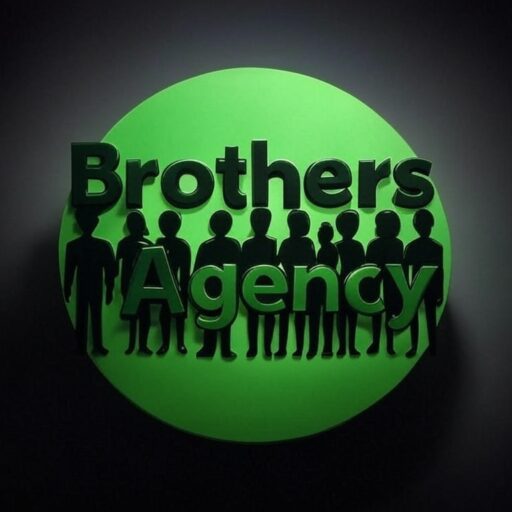Health & Safety

Health and safety law applies to all businesses, however small. Every employer has a legal responsibility to protect the health and safety of their staff and others – such as customers and members of the public – who may be affected by their work activities.
Health and safety duties also extend to the self-employed and employees.
Getting started
Starting a new business can be daunting, and you may be unsure how to start managing health and safety in your workplace. The following points take you through your legal responsibilities.
Health and safety policy
A health and safety policy is a plan detailing how you are going to manage health and safety in your business. It is a document that defines who does what, when and how they do it. If your business employs less than five people you are not legally required to have a written health and safety policy statement. However, you must still ensure that you work safely, and a written policy can help you do this.


Display the health and safety law poster
Employers have a legal duty to display the Health and Safety Executive’s (HSE) Law poster in each workplace or provide each worker with a copy of the equivalent leaflet. The poster includes basic health and safety information and lets people know who is responsible for health and safety in your workplace. You must display the poster where your workers can easily read it, and it must be in a readable condition.
Take out Employers’ Liability Insurance
If your employees get injured or become ill as a result of their work in your employment, they may try to claim compensation from you if they think you are responsible. Employers’ Liability Insurance ensures that you have a minimum level of insurance cover against such claims.


Meet workplace standards
The Workplace (Health, Safety and Welfare) Regulations 1992 cover a wide range of basic health, safety and welfare issues and apply to most workplaces (with the exception of those workplaces involving construction work on construction sites, those in or on a ship, or those below ground at a mine).
They are amended by the Quarries Regulations 1999, the Health and Safety (Miscellaneous Amendments) Regulations 2002, the Work at Height Regulations 2005, and the Construction (Design and Management) Regulations 2007.
Understanding accident reporting
As an employer there is a legal requirement to report certain accidents or incidents under the Reporting of Injuries Diseases and Dangerous Occurrences Regulations 1995 (RIDDOR). This system must only be used by employers or their representatives. You need to report deaths, major injuries, accidents resulting in over seven day injury, diseases, dangerous occurrences and gas incidents.


Accident recording
You must keep a record of any reportable injury, disease or dangerous occurrence. This must include:
- the date and method of reporting
- the date, time and place of the event
- personal details of those involved
- brief description of the nature of the event or disease
You can keep the record in any form you wish. It is recommended that you use your accident book to record this information.
Consult your employees
By law, employers must consult all of their employees on health and safety matters. Businesses can become more efficient and reduce the number of accident and work-related illnesses. Some workers who are self-employed, for example for tax purposes, are classed as employed under health and safety law.


Train your employees
You are legally required to provide training for your employees to ensure they know how to work safely and without risks to health. They must know:
- what hazards and risks they may face;
- how to deal with them; and
- any emergency procedures
As an employer or a self employed person, you will need to keep yourself up to date with your legal duties and know how to identify hazards and control risks arising from your work.
Comply with Smoke free legislation
Smoking is prohibited in all enclosed or substantially enclosed public places and workplaces and is an offence to:
- smoke in smokefree premises
- permit others to smoke in smokefree premises
- fail to display warning notices in smokefree premises
- For more information visit Smoke free Preston.


Carry out a fire risk assessment
Fire safety is enforced primarily by Lancashire Fire and Rescue Service, and should you require further help or advise you should contact them.
1. Statement of Intent
At Brothers Grup Ltd, we are committed to ensuring the health, safety, and welfare of our employees, contractors, customers, visitors, and anyone else who may be affected by our activities. We recognise our responsibilities under the Health and Safety at Work etc. Act 1974, the Management of Health and Safety at Work Regulations 1999, and all other relevant legislation.
Our goal is to:
Provide and maintain a safe and healthy working environment.
Prevent accidents, injuries, and cases of work-related ill health.
Promote a positive health and safety culture through consultation and cooperation with employees.
Ensure compliance with all legal and regulatory requirements.
We achieve this by identifying hazards, assessing risks, and implementing effective control measures, while continuously improving our health and safety performance.
2. Responsibilities
Health and safety is a shared responsibility, and everyone has a role to play. Below are the key responsibilities within Brothers Grup Ltd:
Overall Responsibility: Brothers Grup Ltd, has ultimate responsibility for health and safety, ensuring adequate resources are allocated and that this policy is effectively implemented and reviewed.
Management: Managers and supervisors are responsible for:
Implementing this policy within their areas of control.
Conducting risk assessments and ensuring control measures are in place.
Providing employees with necessary training, information, and supervision.
Investigating accidents, incidents, and near-misses to prevent recurrence.
Employees: All employees are required to:
Take reasonable care of their own health and safety and that of others.
Cooperate with management on health and safety matters.
Report hazards, incidents, or concerns promptly to their supervisor.
Use equipment and safety devices in accordance with training and instructions.
Contractors and Visitors: Contractors must comply with our health and safety procedures, and visitors are expected to follow site safety rules as directed.
3. Arrangements
To meet our health and safety objectives, Brothers Grup Ltd has established the following arrangements:
Risk Assessments: We conduct regular risk assessments to identify hazards, evaluate risks, and implement control measures. Assessments are reviewed annually or when significant changes occur.
Training and Competence: All employees receive appropriate health and safety training, including induction training and role-specific instruction (e.g., manual handling, fire safety). Refresher training is provided as needed.
Safe Equipment and Premises: We ensure that all work equipment, machinery, and premises are regularly inspected, maintained, and fit for purpose. Faults are reported and rectified promptly.
Emergency Procedures: Fire risk assessments are conducted, and clear evacuation procedures are in place. Fire exits, alarms, and extinguishers are regularly tested. First aid facilities and trained first aiders are available on-site.
Incident Reporting and Investigation: All accidents, near-misses, and work-related illnesses are reported and investigated to identify causes and prevent recurrence. We comply with the Reporting of Injuries, Diseases and Dangerous Occurrences Regulations (RIDDOR) 2013.
Workplace Monitoring: Regular workplace inspections are carried out to ensure compliance with safety standards. Employees are consulted on health and safety matters through [e.g., safety committees, team meetings].
Health and Wellbeing: We promote employee wellbeing by addressing workplace stress, providing ergonomic assessments, and ensuring adequate welfare facilities (e.g., rest areas, drinking water).
Specific Risks: Construction: “We ensure safe scaffolding and personal protective equipment (PPE) compliance”; for offices: “We maintain safe electrical systems and display screen equipment assessments”
Specific Risks (Hotel Operations):
We manage risks specific to our hotel operations to ensure the safety of guests, employees, and visitors, including:
Fire Safety: We maintain fire detection systems, alarms, and extinguishers, with regular checks and staff training on evacuation procedures. Guest rooms and public areas have clear fire escape routes.
Housekeeping Safety: We provide training on safe handling of cleaning chemicals (COSHH compliance) and ensure proper storage to prevent spills or exposure. Slip and trip hazards are minimised through regular cleaning and maintenance.
Kitchen Operations: Kitchen staff are trained in safe food handling, knife safety, and equipment use. We maintain gas and electrical appliances to prevent fires or injuries, with regular inspections.
Guest Areas: Lifts, staircases, and walkways are inspected regularly to prevent accidents. Wet floor signs and prompt spill clean-ups reduce slip risks.
Personal Protective Equipment (PPE): Staff are provided with appropriate PPE (e.g., gloves for housekeeping, non-slip shoes for kitchen staff) and trained in its use.
Manual Handling: Employees receive training to safely lift and move items such as luggage, furniture, or supplies to prevent musculoskeletal injuries.
Guest Safety: We ensure pool areas (if applicable) have lifeguard supervision or clear safety signage, and all recreational facilities are maintained to prevent accidents.
Integration Instructions:
Insert this section into the “3. Arrangements” part of the full policy, replacing the previous placeholder for specific risks.
Ensure the policy remains visible on your website.
4. Communication and Consultation
We engage with employees on health and safety matters through regular meetings, safety briefings, and open reporting channels. Employees are encouraged to raise concerns without fear of reprisal. If a safety representative or committee is appointed, they will be involved in policy reviews and risk assessments.
5. Monitoring and Review
This policy is reviewed annually or when significant changes occur, such as new legislation, business activities, or incidents. Performance is monitored through audits, inspections, and incident analysis to ensure continuous improvement.
Signed: Andrei Neamtu
Position Director
Date: 01 Jan 2025


